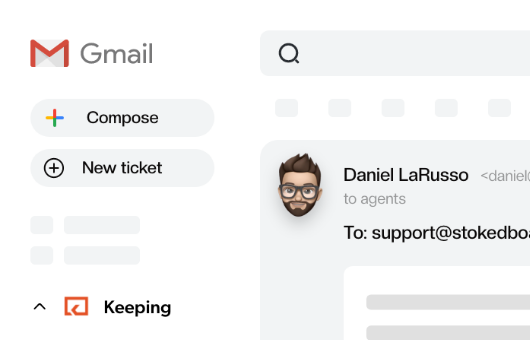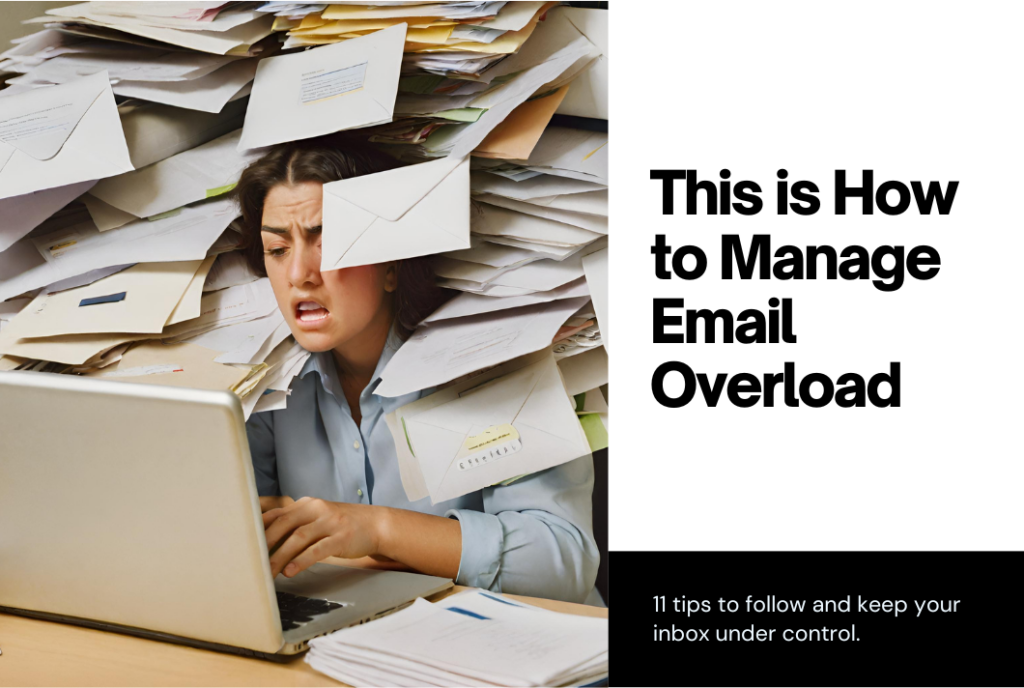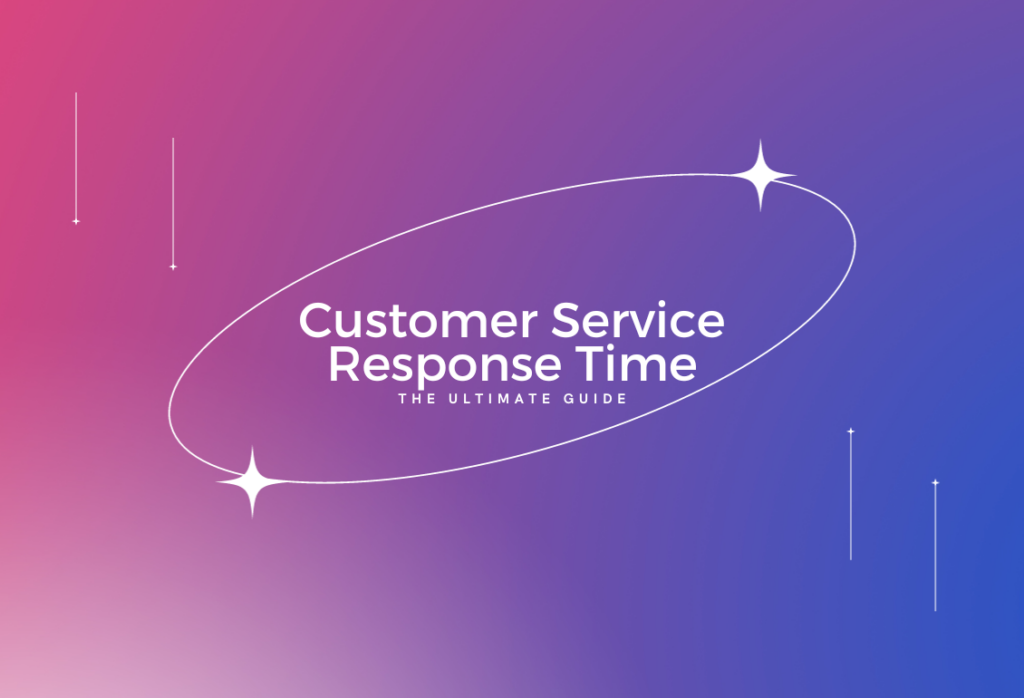
This is How You Perform a Powerful Customer Service Audit (+ Checklist to Follow)
A customer service audit helps you evaluate the quality of your support. Learn how to perform a customer service audit, and grab a checklist to follow in your organization.
Customer service can make or break a brand. With 68% willing to pay more for better customer experiences—customer service is one of the key differentiators between you and your competitors.
Since customer service is so important, you must perform regular customer service audits to ensure you’re on track. But wait, what do you exactly check during these audits? Enter: customer service audit checklists.
A customer service audit checklist tells you exactly what needs to be there in your organization to ensure excellent customer experience. Today, we’ve created the ultimate checklist that’ll make sure your customer service team delivers quality customer service.
Check it out by reading on.
Why Do You Need a Customer Service Audit?
Customer service audits play a crucial role in helping improve the customer experiences of your brand. Here are a few benefits that you’ll get out of customer service audits:
Improving customer service
Customer service audits help you understand the progress of your customer service efforts. You are able to analyze what you’re doing right and what needs to be improved. CS audits give you an unbiased look into what customers feel about your brand.
When you have all this data at hand, you’re able to improve in the right direction. Without knowing what needs to be improved, there’s little scope for improvement. Frequent customer service audits help in forming excellent customer experiences in the long run.
Align customer service strategy with business goals
Customer service shapes the success of your business in many ways. Hence, it is important that customer service is aligned with your business goals. A customer service adult helps you evaluate whether your customer service strategy is aligned with business goals.
Let’s say one of your business goals is to build brand loyalty. However, upon performing a customer service audit you realize that the churn rates are quite high with your brand and it is because of irritated agents. Since the audit has helped you identify the cause of this problem, you’re now able to change your strategy to reduce churn rate.
Provide better training to employees
By looking at customer service audits you’re able to identify what mistakes your agents usually make. Based on the observations you can make better training programs for your agents. Since your training program will already cover everything that may go wrong, you’re then able to prevent any mistakes from happening. This also helps shape better customer experiences.
Free Customer Service Audit Checklist
Here’s all that you may check to perform a successful customer service audit:
Are you hiring the right people?
You may make great customer experiences your entire motto, but if your customer support staff does not share the same enthusiasm or lacks knowledge, your motive of providing excellent customer service will never be fulfilled.
Not everyone belongs to customer support. The right people for customer service have certain traits you must look out for. Your customer service leaders should start by creating a list of skills and traits needed in your customer service agents.
While interviewing the applicants, your customer service leaders must keep their observation skills on. Generally, the right customer service agent is a happy person who enjoys life and has an optimistic view of life.
Frustrated and negative people rarely make good customer service representatives. Other soft skills your customer service reps must have are:
- Empathy
- Responsible
- Listening skills
- Decision making
- Communication skills
Are your agents trained properly?
Only a trained agent can provide a good customer service experience. Hence, the first thing you must check is that your agents are provided with adequate training in terms of your product and customer service process.
Training your agents helps in the following:
- Constant learning and skill upgradation
- Better customer service and customer retention
- Lower agent turnover
Training your agents is a multistage process. First, you must train them when they join your organization, and later training about additions and updates in product lines or processes must be provided regularly.
Is your organization’s culture is positive and helpful?
A positive and helpful organizational culture boosts employee morale. Your agents will be in a happy mood, which will also reflect in their customer service delivery. Employees caught up in office politics, or toxic work relationships will most often deliver negative customer experiences.
A culture of helping others must also be cultivated in your organization. When agents are willing to help each, it brings a better workflow and improved teamwork. The results of your efforts towards excellent customer service will also be positive this way.
Is your team aware of your KPIs?
KPIs or Key Performance Indicators are what will tell you whether you’re on track with achieving your goals or you’ve derailed.
Before y0u start monitoring customer service kpis, you must know what are the suitable KPIs for you. For some companies, faster response time may be a good performance indicator, but for some, a better CSAT score may be necessary.
What your KPIs are will depend on your organization’s goals. For example, your company’s primary goal is to keep consumers and foster loyalty. How can your customer service staff accomplish this?
The first step would be looking at canceled accounts to determine the root cause of account churn. Note any objectives or metrics you should include to stop current customers from leaving for the same reasons in the future.
Next, determine how you can proactively stop customers from leaving. How can you offer prompt assistance that engages customers and fosters loyalty? Any actions that customer support needs to take should be noted.
This way, you can form KPIs that align with your business goals.
Are you delivering personalized customer service?
A personal touch always goes a long way. If you deliver personalized customer service, if not anything else, your customer will never forget your brand.
Personalized customer service does not have to be complicated. To deliver personalized customer service, you don’t have to know a customer in and out. It simply means delivering customer service according to the customer’s profile.
Ensuring personalization in your customer service will improve your customer experiences by a great leap. Personalization could be as small as using a customer’s name in conversations or as big as sending special discounts based on a customer’s buying behavior.
Do you have and follow a customer service strategy?
Yes, your customer service also needs a strategy.
A customer service strategy comes with multiple benefits. A well-thought customer service strategy lets your agents deliver a consistent customer experience because they now have measurable benchmarks to track customer service effectiveness. As a result of improved customer service, your customers are more satisfied, and brand loyalty is also increased.
To ensure the strategy is being appropriately implemented across all customer touch points, you must also monitor the progress. One way to do this is to take feedback on your strategy’s performance constantly. Another way is to track your customer service metrics—our next point!
Do you track your customer service metrics?
Customer service metrics are the indicators of your customer service performance and tell you what needs improvement. When performing a customer service audit, you must check that you are tracking the necessary customer service metrics.
Now, tracking all existing metrics may get overwhelming, so you must decide which couple you’d prefer to track. Some common customer service metrics tracked by organizations are First Response Time, Mean Time to Resolution, Customer Satisfaction Score, and Retention Rates.
Are you triaging tickets?
When you have a huge volume of tickets flowing in every day, managing them could become very difficult. Ticket triage helps you manage them better. When you triage tickets, you can ensure that the right person is handling a support request.
With 84% of customers getting irritated if an agent is uninformed, you don’t want tickets to end up with agents that aren’t a good fit for it.
So, when conducting your next customer service audit, check that there is a ticket triage system. You could triage tickets manually if you’re at a smaller stage or use automation if you’re an enterprise.
Are you taking feedback about customer service experiences?
The basic idea of customer service is serving your customers. So, knowing what they like and don’t like is necessary. Moreover, your customers also feel valued when you ask for their feedback.
Looking at the feedback you receive over time can empower positive business change and improve customer experience. A good way to take customer service feedback is by asking it as a follow-up question.
Many companies will send you a follow-up with a feedback form after a query has been resolved. You can automate this response and review all the feedback you receive monthly.
Do you have a proper feedback implementation process?
The job does not end with taking feedback from your customers. In fact, it starts there. You must check what happens to customer feedback when doing customer service audits. This is especially important when you’ve received negative customer feedback.
Where does the negative feedback go? Who responds to it? Who handles the consequences of it? And most importantly, what actions are taken to improve customer experience?
Without all this, your customer feedback is as good as nothing. You must set up a process for handling negative feedback and improving on what went wrong.
Do you have minimal wait times?
Your customers hate waiting. A study by Zendesk found that nearly 60% of customers report long holds and wait times as the most frustrating aspect of customer experience.
In times like these, you must have minimal wait times. Understandably, each support request cannot be responded to instantly, but response times must be kept at the lowest possible.
A few ways you can reduce your wait times are:
- Use automation tools like chatbots.
- Projecting the volume of tickets and hiring people accordingly.
- Triaging tickets for better productivity.
A simple way to look at the importance of minimal wait times is that the more your customer has to wait for a resolution from you, the more time they have to look at what your competitors offer.
Do you provide omnichannel customer support?
10 years back, this may not have been a part of a customer service audit checklist, but today’s customers want omnichannel support.
The fact that since 2012, the percentage of companies investing in omnichannel support has increased from 20% to more than 80% is enough proof of this.
Providing omnichannel support simply does not mean being present across different platforms. It also means resolving queries flowing in from the different channels efficiently. So, before you go omnichannel, you must consider this.
Are you preparing and understanding customer service reports?
Customer service reports give you a bird’s eye view of everything in the customer service department. They’re great for measuring progress and understanding what could be improved.
Customer service reports help a business make better judgments using real insights rather than guesses. Understanding service reports can assist managers in enhancing workforce management, efficacy, and productivity of their customer care teams, in addition to raising overall customer satisfaction levels.
Are your agents using a positive tone and language?
When a customer reaches out to you, they are usually already frustrated. Added to that, if your agents are rude, ignorant, or harsh with their tone—the customer will get even more frustrated. This, undoubtedly, will not turn out well.
This is why you must ensure that your customers get treated politely and feel valued. Training sessions on the right way to communicate with customers must be provided to ensure your agents are clear on what and what not to say when a customer reaches out.
Are your agents good listeners?
A large part of customer service is shaped through active listening. When you listen carefully, you can understand your customer’s real problem. This is why you need to check in the audits that your agents are active listeners.
Bringing good listeners into customer support starts right at the hiring stage. You can put your agents into various tests to find out how good they’re at listening. Apart from the tests, you can also provide regular training to your agents explaining the importance of active listening and how to do it.
Do you have an issue escalation process?
Issue escalation usually happens when problems are complex—which means they are important problems too. In such situations, not having a proper escalation process could pose bigger problems. This is why you must check that your customer staff has and knows about the issue escalation process.
A set escalation process helps solve problems quickly and with more clarity. Either an escalation manager could perform this task, or you could use help desk software with built-in issue management.
Do you have the right help desk software for your needs?
Software often takes a backseat when performing customer service audits—but it should not. After all, it’s the driving engine of your customer support. This is why having help desk software that’s the best for your needs is extremely important.
The right help desk software makes it easier for your customer support staff to deliver excellent customer service consistently. And that is precisely what Keeping helps you with.
Keeping is a fully-featured help desk software that works right in your Gmail inbox. With Keeping, you can track your customer service metrics, triage tickets, gather customer feedback, escalate issues efficiently, and improve the quality of your customer service.
Keeping is for you if you want to deliver better customer service experiences to your valuable customers. Start doing that today!
Join 150+ teams that are sharing inboxes with us
The easiest way to upgrade your shared Gmail account. There’s no credit card is required.






